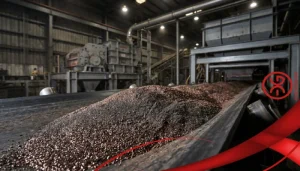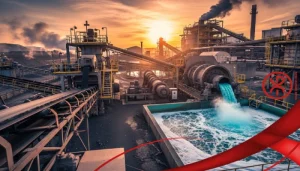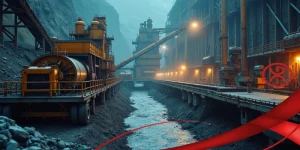Ore, the raw material buried deep within the earth, holds the promise of metals that power modern life—from the steel in bridges to the copper in wiring. The process of transforming this unrefined rock into usable minerals is a fascinating journey that begins in the depths of a mine and ends at the mill, where it is prepared for further refinement. At Alpha Grinding Media, we specialize in the tools that make this transformation efficient and effective, particularly in the grinding stage where ore is broken down into fine particles. Understanding how to produce ore from extraction to initial processing sheds light on the ingenuity behind the mining industry and the critical role of quality grinding media in achieving optimal results.
This article explores the step-by-step path of ore from its discovery underground to its preparation at the mill. Whether you’re curious about industrial processes or considering the supply chain for mining operations, this guide offers a clear overview of the journey. By the end, you’ll appreciate the precision and effort involved in turning rock into resource.
The Discovery and Extraction
The adventure of ore Processing starts long before heavy machinery comes into play. Geologists and engineers identify potential deposits through surveys and core sampling, pinpointing areas rich in valuable minerals like iron, copper, or gold. Once a viable site is confirmed, mining operations commence, carefully extracting the ore-bearing rock while aiming to minimize disruption to the surrounding environment.
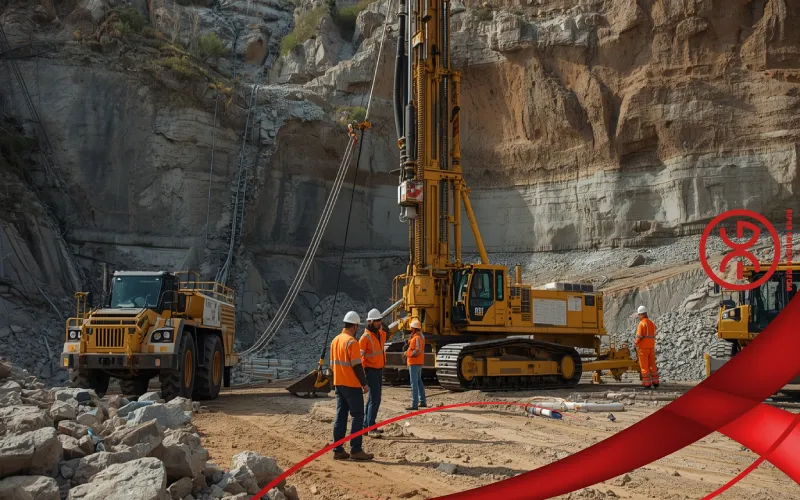
Open-Pit Mining
In open-pit mining, massive excavators and haul trucks remove layers of overburden—soil and rock covering the ore body—to expose the deposit. This method suits shallower ores and allows for large-scale extraction. Workers use drills to blast the rock into manageable fragments, which are then loaded onto trucks for transport. The process demands careful planning to ensure safety and efficiency, as the open expanse exposes teams to weather and stability challenges.
Underground Mining
For deeper deposits, underground mining employs tunnels and shafts to access the ore. Techniques like room-and-pillar or cut-and-fill create stable networks below ground, where drill-and-blast methods loosen the material. Muckers—specialized loaders—gather the broken ore and convey it to the surface via skips or belts. This approach preserves surface land but requires robust ventilation and support systems to protect miners from cave-ins and poor air quality.
Initial Handling: From Rock to Rough Ore
As ore emerges from the mine, it undergoes preliminary sorting to discard obvious waste rock, known as gangue. Conveyor belts or trucks carry the rough ore to stockpiles near the processing facility. At this stage, the material is still coarse and mixed, setting the foundation for the more intensive work ahead. Alpha Grinding Media understands that even early handling affects downstream efficiency, which is why our products are designed to handle variable ore qualities without compromising performance.
Crushing: Breaking Down the Bulk
With ore now at the surface, the next phase focuses on reducing its size to make it suitable for finer processing. Crushing stations, often located close to the mine to cut transport costs, use a series of machines to shatter the rock into smaller pieces. This step is essential because large chunks are impractical for milling and would overwhelm subsequent equipment.
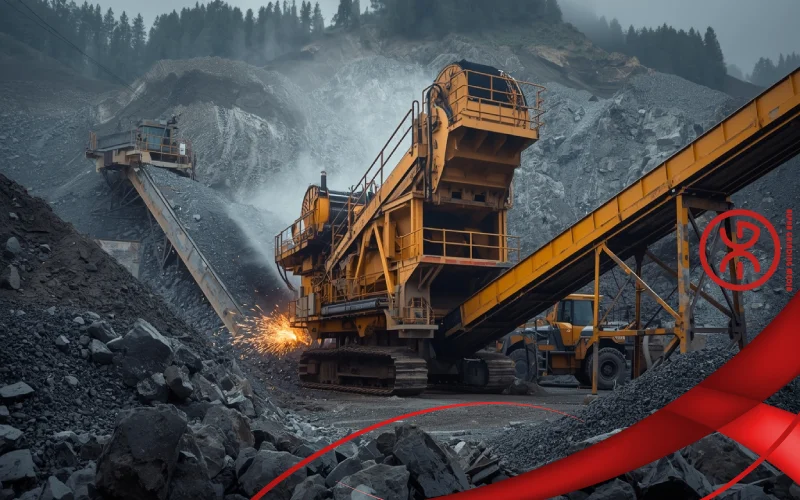
Primary Crushing: The First Major Reduction
Jaw crushers or gyratory crushers serve as the workhorses here, gripping and compressing the ore against steel plates to create fragments no larger than a human fist. The machinery’s rhythmic motion echoes through the site, steadily transforming boulders into gravel-like material. Vibrating screens then separate finer pieces, recycling oversize back for another pass. This initial break liberates some minerals early, easing the load on later stages.
Secondary and Tertiary Crushing: Refining the Pieces
As the ore moves to secondary crushers—like cone or impact types—it faces further compression or striking forces to yield pebble-sized output. Tertiary crushers polish this off, ensuring uniformity for the mill. Water sprays often cool the equipment and suppress dust, maintaining a safer workspace. The progression from primary to tertiary crushing gradually exposes more mineral surfaces, preparing the ore for the detailed work of grinding.
These crushing operations highlight the balance between power and precision, where durable components withstand constant abrasion. At Alpha Grinding Media, we provide grinding solutions that complement this stage, ensuring seamless flow into milling without bottlenecks.
Grinding: The Heart of Ore Liberation
In most metallic ore operations, grinding represents the pivotal transformation in ore processing, where the crushed material is pulverized into a powder fine enough to separate valuable minerals from waste. Mills tumble the ore with water and grinding media—such as balls or rods—creating a slurry that facilitates mineral release. This wet process, common in many operations, enhances efficiency by reducing dust and aiding flow.
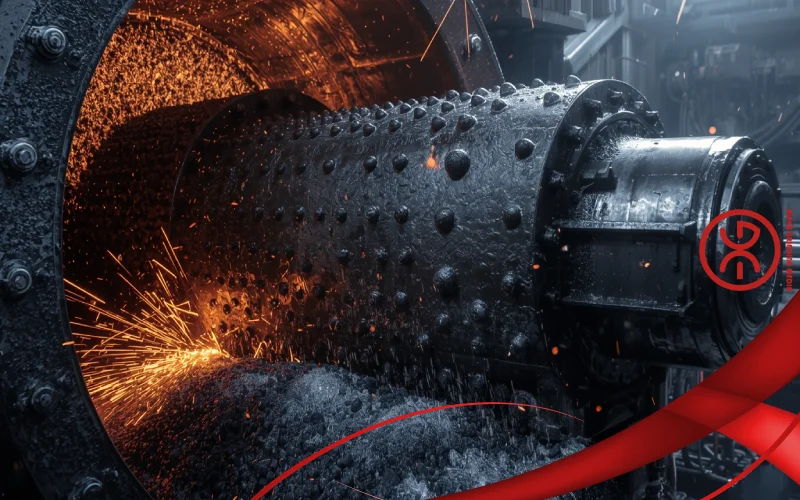
Types of Mills: Tailored to Ore Characteristics
Ball mills, cylindrical drums filled with steel balls, rotate to cascade the media over the ore, progressively wearing it down through impact and attrition. Rod mills, using elongated rods, offer gentler action for coarser feeds, preventing over-grinding. Selection depends on ore hardness and desired particle size; softer ores might favor autogenous or semi-autogenous mills use the ore itself, often supplemented with steel balls. of type, the goal remains consistent: achieving a uniform slurry ready for separation.
The Role of Grinding Media in Efficiency
High-quality grinding media is crucial for optimal performance, as it directly influences energy use and output fineness. Forged steel balls from Alpha Grinding Media, engineered for wear resistance, maintain their shape longer, reducing replacement frequency and downtime. In the mill’s churning environment, these media strike and rub the ore particles, fracturing them along mineral boundaries. Proper sizing—matching ball diameter to ore type—maximizes liberation while minimizing excess fines that could complicate downstream steps.
Monitoring and Optimization: Keeping the Process Smooth
Operators closely watch mill load, power draw, and slurry density to adjust feed rates and media levels. Automated systems alert to imbalances, ensuring consistent output. This vigilance prevents issues like under-grinding, which leaves minerals locked in waste, or over-grinding, which creates slimes that slow separation. Alpha Grinding Media supports this with media that delivers predictable wear patterns, allowing teams to fine-tune operations for peak productivity.
Separation and Beneficiation: Isolating the Valuable
Once ground, the ore slurry enters separation, where physical and chemical methods isolate the target minerals. This beneficiation stage boosts the ore’s value by concentrating the desired components, discarding gangue as tailings. Techniques vary by mineral type, but all aim to exploit differences in density, magnetism, or surface properties.
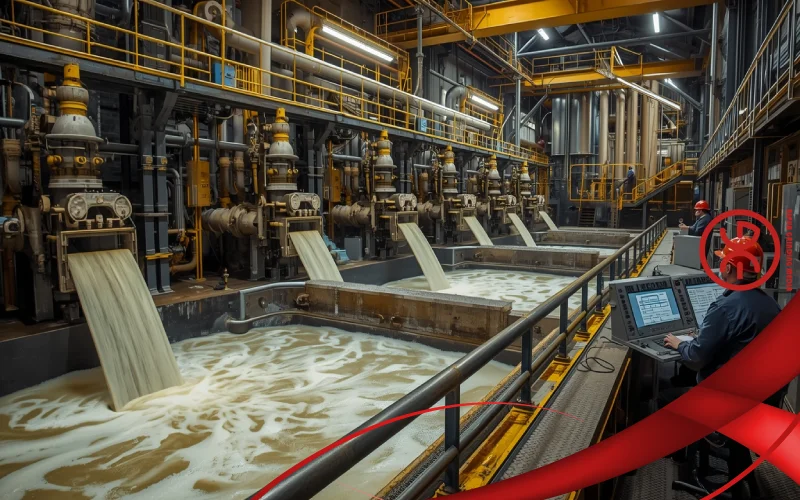
Gravity Separation: Harnessing Natural Differences
Shaking tables or spirals use gravity to sort particles, with heavier minerals settling faster than lighter waste. Jigs pulse water through the slurry, creating currents that stratify materials by weight. This low-energy method suits free-milling ores like gold in quartz, recovering valuables without harsh chemicals. In practice, it often follows grinding to handle the finest particles effectively.
Flotation: Creating Bubbles of Value
Flotation cells agitate the slurry with air and collectors, which make target minerals hydrophobic so they attach to bubbles and rise to the surface. These frothy concentrates rise to the surface for skimming, while hydrophilic gangue sinks. Tailings are dewatered and stored safely. For sulfide ores like copper, this process achieves high recovery rates, turning low-grade feed into rich concentrates.
Magnetic and Other Methods: Specialized Sorting
Magnetic separators pull ferrous minerals from non-magnetic waste using electromagnets, ideal for iron ores. Electrostatic separation charges particles to attract opposites, useful for dry feeds. These adjunct techniques refine the output, ensuring the concentrate meets smelter specifications. At Alpha Grinding Media, we recognize how precise grinding enhances separation yields, as finer liberation exposes more mineral surfaces for effective recovery.
From Mill Output to Final Product: The Next Horizon
The mill’s concentrate—now a thickened paste of valuable minerals—marks the end of primary processing but the start of metallurgy. It travels to smelters or refineries for melting, leaching, or electrolysis to extract pure metals. Tailings, the discarded slurry, are managed through dams or backfill to mitigate environmental impact, with water recycled to sustain operations.
This journey from mine to mill underscores the mining industry’s blend of tradition and technology. Innovations in grinding, like advanced media from Alpha Grinding Media, continue to drive efficiency, reducing energy needs and improving sustainability. As demand for metals grows, these processes evolve to balance resource extraction with responsible stewardship.
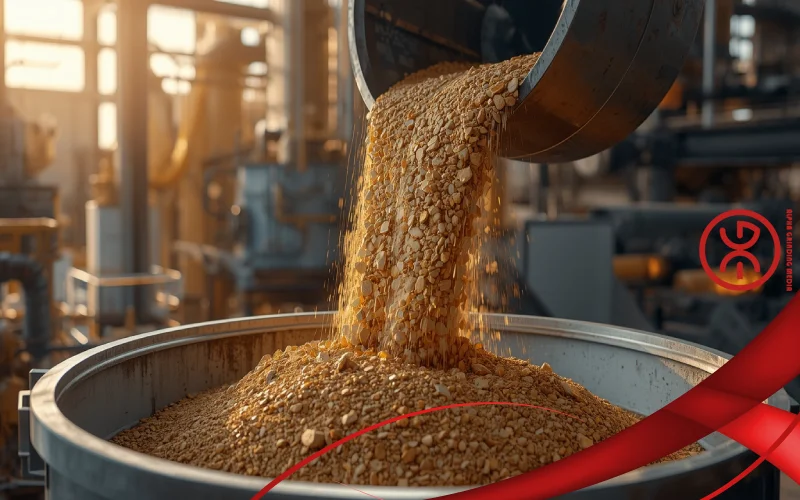
Conclusion
The path from mine to mill is a testament to human ingenuity, turning earth’s hidden treasures into the building blocks of progress. Each stage—from extraction and crushing to grinding and separation—builds on the last, relying on specialized equipment and expert oversight to unlock ore’s potential. At Alpha Grinding Media, we’re proud to contribute to this vital chain, providing grinding solutions that enhance every step. Whether for iron, copper, or precious metals, understanding how to produce ore empowers us to appreciate the unseen efforts behind everyday materials. This cycle, ever-refining, ensures resources flow sustainably into the world we build.
Frequently Asked Questions
1. What is the main goal of the grinding stage in ore Processing?
Grinding aims to break down crushed ore into a fine powder, liberating valuable minerals from surrounding waste rock. This step is crucial for downstream separation, as it increases the surface area of particles, making it easier to isolate concentrates through methods like flotation or gravity sorting.
2. How does open-pit mining differ from underground mining in ore extraction?
Open-pit mining removes surface layers to access shallower deposits, using large-scale equipment for bulk removal, while underground mining creates tunnels to reach deeper ores, focusing on precision to maintain structural integrity and minimize surface disturbance. Both methods prioritize safety and efficiency based on deposit depth.
3. Why is grinding media important in the milling process?
Grinding media, such as steel balls or rods, provides the impact and abrasion needed to pulverize ore in mills. High-quality media from providers like Alpha Grinding Media ensures consistent particle size, reduces wear on equipment, and optimizes energy use, leading to higher recovery rates in beneficiation.
4. What happens to waste materials after ore processing at the mill?
Waste, or gangue, is separated as tailings—a slurry of fine particles—and dewatered for safe storage in impoundments or reused in mine backfill. Modern practices emphasize environmental controls, like water recycling and revegetation, to minimize impacts on local ecosystems.



